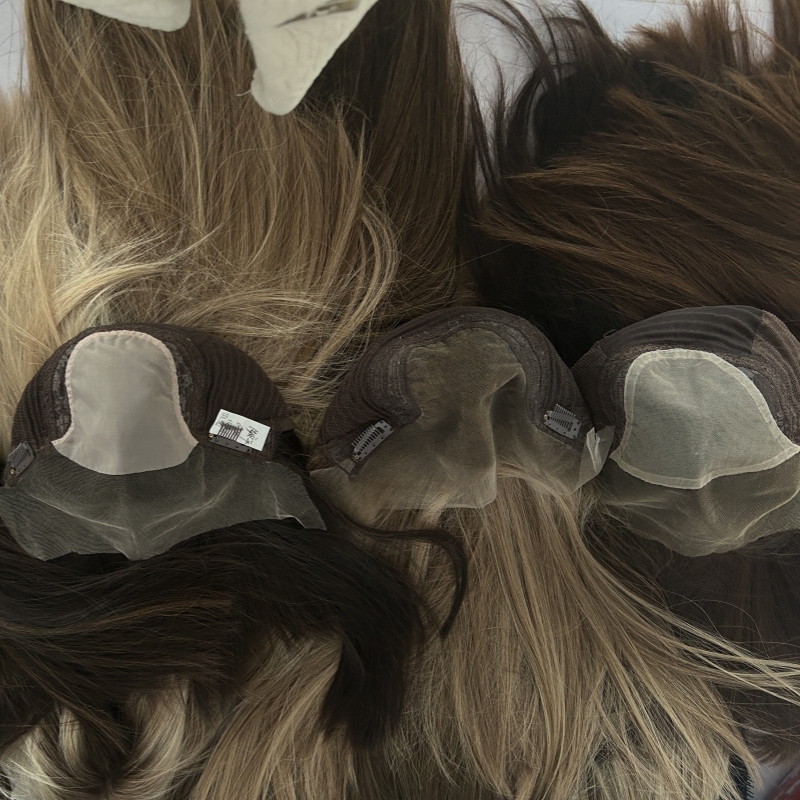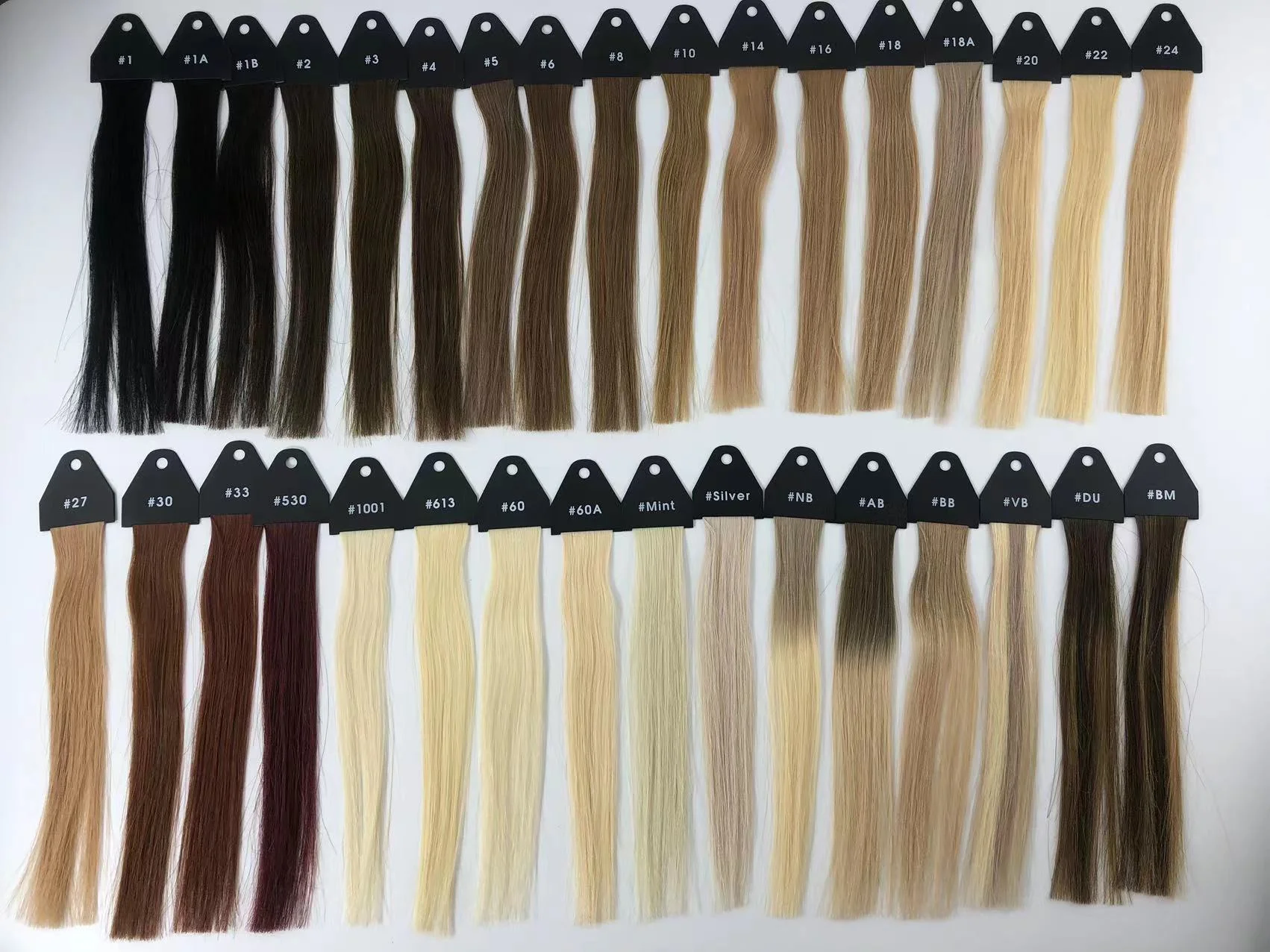When it comes to transforming your hairstyle, two popular options stand out: wigs and weaves. Each offers its unique set of benefits and considerations, making the choice between them a matter of personal preference and lifestyle. Let’s delve into the features of both wigs and weaves to help you determine which one is the best choice for you.
Wigs are full hairpieces that cover the entire scalp, offering instant transformation and versatility. They come in a wide range of styles, colors, and lengths, allowing you to experiment with different looks without making permanent changes to your natural hair. Wigs are ideal for individuals who enjoy switching up their hairstyle frequently or those experiencing hair loss. With wigs, you can achieve a new look in minutes, making them a convenient option for busy lifestyles.

A wig is a hairpiece or head covering made from human hair, synthetic fibers, or a blend of both, designed to resemble natural hair. Wigs come in various styles, lengths, colors, and textures, offering endless possibilities for styling and customization.
The base structure of a wig can vary depending on the type and construction method. Common wig base structures include:

The price of wigs can vary widely depending on factors such as the quality of materials, construction method, and brand reputation. Synthetic wigs are generally more affordable, with prices ranging from $20 to $200 or more. Human hair wigs are typically more expensive, with prices starting at $100 and ranging up to several thousand dollars for high-quality, custom-made wigs.
When considering a wig, there are several factors to take into account to ensure you choose the best option for your needs and preferences. These factors include:
1.Material: Wigs can be made from human hair, synthetic fibers, or a blend of both. Consider the pros and cons of each material, such as the durability, natural appearance, and maintenance requirements.
2.Style: Decide on the style of wig that best suits your desired look, whether it’s short, long, curly, straight, layered, or textured. Consider factors such as face shape, skin tone, and personal style when selecting a wig style.
3.Color: Choose a wig color that complements your skin tone and enhances your overall appearance. Consider whether you want a natural hair color, such as black, brown, or blonde, or if you prefer a more vibrant or unconventional color.
4.Cap Construction: Wigs come in various cap constructions, including lace front, full lace, monofilament, and classic cap. Each cap type offers different benefits in terms of comfort, breathability, and realism. Consider which cap construction best suits your needs and preferences.

5.Size: Ensure you choose the correct wig size to achieve a comfortable and secure fit. Measure your head circumference and refer to the manufacturer’s size chart to determine the appropriate size for your wig.
6.Quality: Consider the quality of the wig, including the craftsmanship, construction, and overall durability. Invest in a high-quality wig that will last longer and provide a more natural appearance.
7.Budget: Determine your budget for purchasing a wig and explore options within your price range. Keep in mind that higher-quality wigs may come with a higher price tag but offer better longevity and performance.
8.Maintenance: Consider the maintenance requirements of the wig, such as washing, styling, and storing. Determine if you’re willing to invest the time and effort into caring for the wig properly to ensure it remains in good condition.
By considering these factors, you can make an informed decision when choosing a wig that meets your specific needs, preferences, and budget.
In conclusion, wigs offer a convenient and versatile solution for changing your hairstyle and enhancing your look. With proper care and maintenance, a wig can provide natural-looking results and long-lasting wear. Whether you’re looking to experiment with different styles or conceal hair loss, a wig can help you achieve the desired look with ease.
Weaves involve attaching hair extensions or bundles to natural hair using braiding, bonding, or sewing methods. They provide added volume, length, and versatility to natural hair, but they require more maintenance than wigs. Weaves offer a more permanent solution and can last for several weeks to months with proper care.
A weave is a hair extension technique where additional hair, typically in the form of wefts or bundles, is attached to natural hair using braiding, bonding, or sewing methods. Weaves are used to add length, volume, and versatility to natural hair, allowing for various styling options and looks.
Hair weaves are popular for enhancing the appearance, texture, and volume of natural hair. They offer various features and benefits that cater to different styling preferences and hair care needs. Here are some key features of hair weaves:
Textures: Hair weaves come in various textures, including straight, wavy, curly, and kinky, allowing users to match their natural hair or achieve a desired look.
Styles: They can be styled in numerous ways, from sleek and straight to voluminous curls or intricate braids.
Human Hair: Offers a natural look and feel, can be styled with heat tools, and is long-lasting.
Synthetic Hair: Generally more affordable, comes in a variety of colors and styles, but may have limitations regarding heat styling and longevity.
Sew-in Weaves: Attached by braiding the natural hair and sewing the weave onto the braids, offering durability and a natural look.
Glue-in/Quick Weaves: Attached using bonding glue, providing a quicker application process but usually less durable.
Clip-in Weaves: Attached with clips, allowing for easy removal and reapplication, making them ideal for temporary changes.
Tape-in Weaves: Attached using adhesive tape, offering a balance between ease of application and durability.
Hair weaves are available in various lengths, from short to long, enabling users to choose based on their preference for volume and length.
They can add significant volume, especially beneficial for individuals with thin or fine hair.
Wide range of color options, including natural shades, highlights, ombre effects, and bold, unconventional colors.
Users can experiment with colors without the need to dye their natural hair.

Maintenance varies depending on the type of weave and material. Human hair weaves generally require more care, including washing, conditioning, and regular styling.
Synthetic weaves often require less maintenance but may need specific products to avoid damage.
The longevity of a weave depends on the quality of the hair and the application method. Human hair weaves tend to last longer than synthetic ones, especially with proper care.
Sew-in and tape-in weaves usually last longer than glue-in or clip-in options.
Hair weaves offer the flexibility to change hairstyles frequently without altering natural hair, protecting it from damage due to excessive styling or chemical treatments.
They can be used to achieve specific looks for special occasions, such as weddings, photoshoots, or events.
Weaves can protect natural hair from environmental damage, heat styling, and manipulation, promoting healthier hair growth.

The price of weaves can vary depending on factors such as the type and quality of hair extensions, the complexity of the installation method, and the salon’s location. Synthetic hair weaves are generally more affordable, with prices starting at around $20 to $100. Human hair weaves are typically more expensive, with prices ranging from $50 to $500 or more for high-quality virgin or Remy hair extensions.
In conclusion, weaves offer a versatile and long-lasting solution for adding length, volume, and versatility to natural hair. With proper installation and maintenance, weaves can provide natural-looking results and allow for various styling options. However, it’s essential to consider the time, effort, and potential risks involved in wearing weaves before making a decision.
Deciding between a wig and a weave ultimately depends on your personal preferences, lifestyle, and styling goals. Here’s a comparison to help you determine which option may be the best choice for you:

Ultimately, the best choice between a wig and a weave depends on your individual needs and preferences. If you value convenience and versatility, a wig may be the better option. However, if you desire a longer-lasting solution with added volume and length, a weave could be the ideal choice. Consider factors such as comfort, maintenance requirements, and desired look when making your decision.
Choosing EMEDA’s wigs and weaves offers numerous advantages, making their products a preferred choice for many customers. Here are the main reasons to choose EMEDA:
Human Hair: EMEDA provides high-quality human hair that looks natural, feels soft, and can be styled with heat tools.
Synthetic Hair: Their synthetic hair is also of good quality, designed to mimic the appearance and texture of natural hair.
EMEDA offers a diverse range of textures, lengths, and colors, allowing customers to find the perfect match for their desired style.
Their product selection includes straight, wavy, curly, and kinky hair textures.
Many of EMEDA’s products can be customized to meet specific preferences, such as custom coloring, specific lengths, and personalized styling.
EMEDA’s human hair products are known for their durability and longevity, especially with proper care.
Their weaves and wigs are designed to withstand regular styling and washing, maintaining their quality over time.
EMEDA is known for its responsive and helpful customer service, providing support and guidance to customers throughout their purchase and use of the products.
While maintaining high quality, EMEDA offers products at competitive prices, making them accessible to a wide range of customers.
They often provide good value for money, balancing quality and cost effectively.
EMEDA has garnered positive reviews from customers and a good reputation in the hair industry for delivering reliable and high-quality products.
EMEDA emphasizes ethical sourcing practices for their human hair, ensuring that the hair is obtained in a responsible and sustainable manner.
The brand stays up-to-date with the latest hair trends and innovations, regularly updating their product offerings to reflect current styles and preferences.
Overall, choosing EMEDA Wigs and Weaves ensures you receive high-quality, versatile, and reliable hair products. Their commitment to quality, customer satisfaction, and variety ensures that you can find the perfect hair solution to meet your needs.

New customization and stock clearance
WhatsApp us